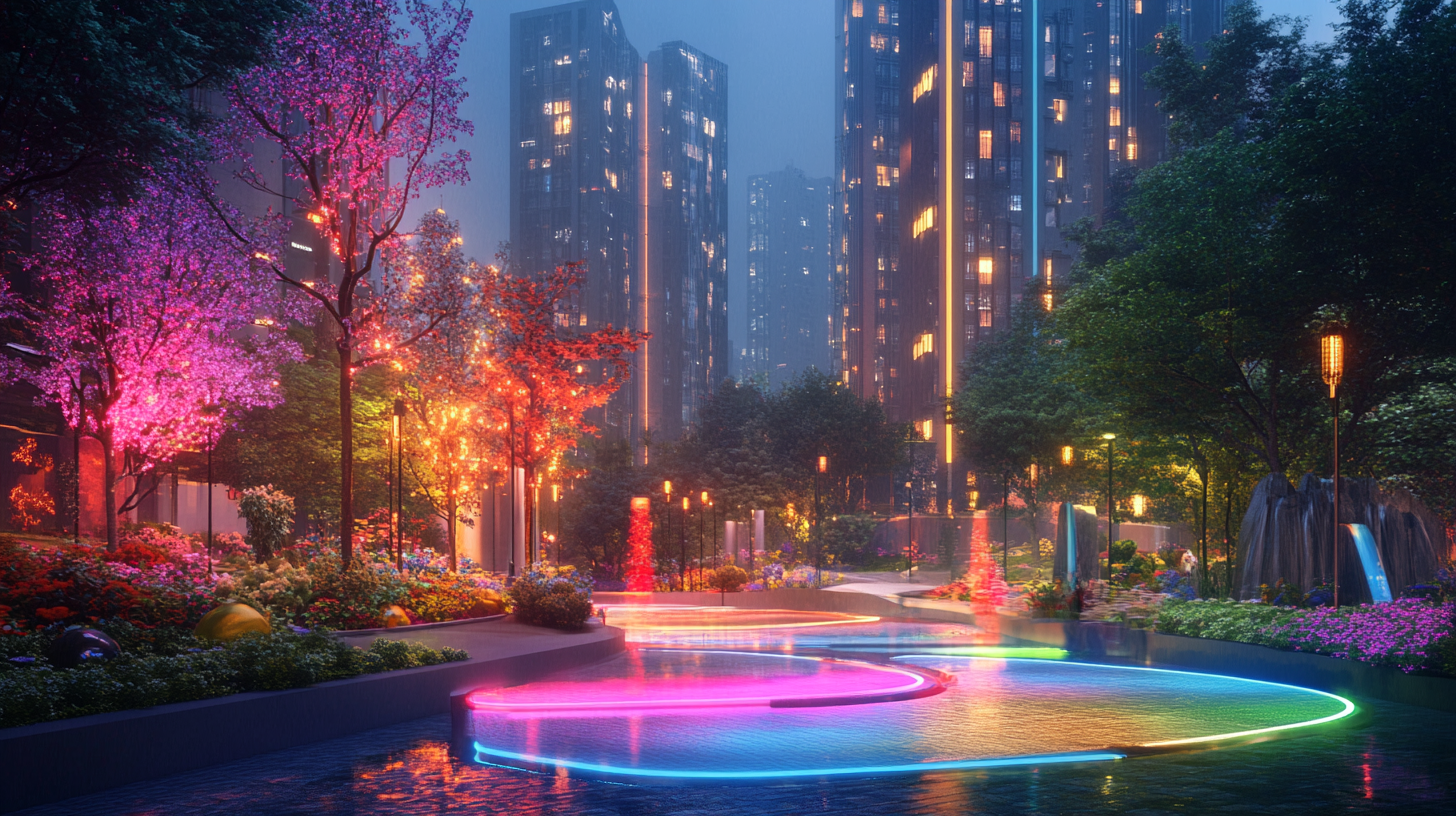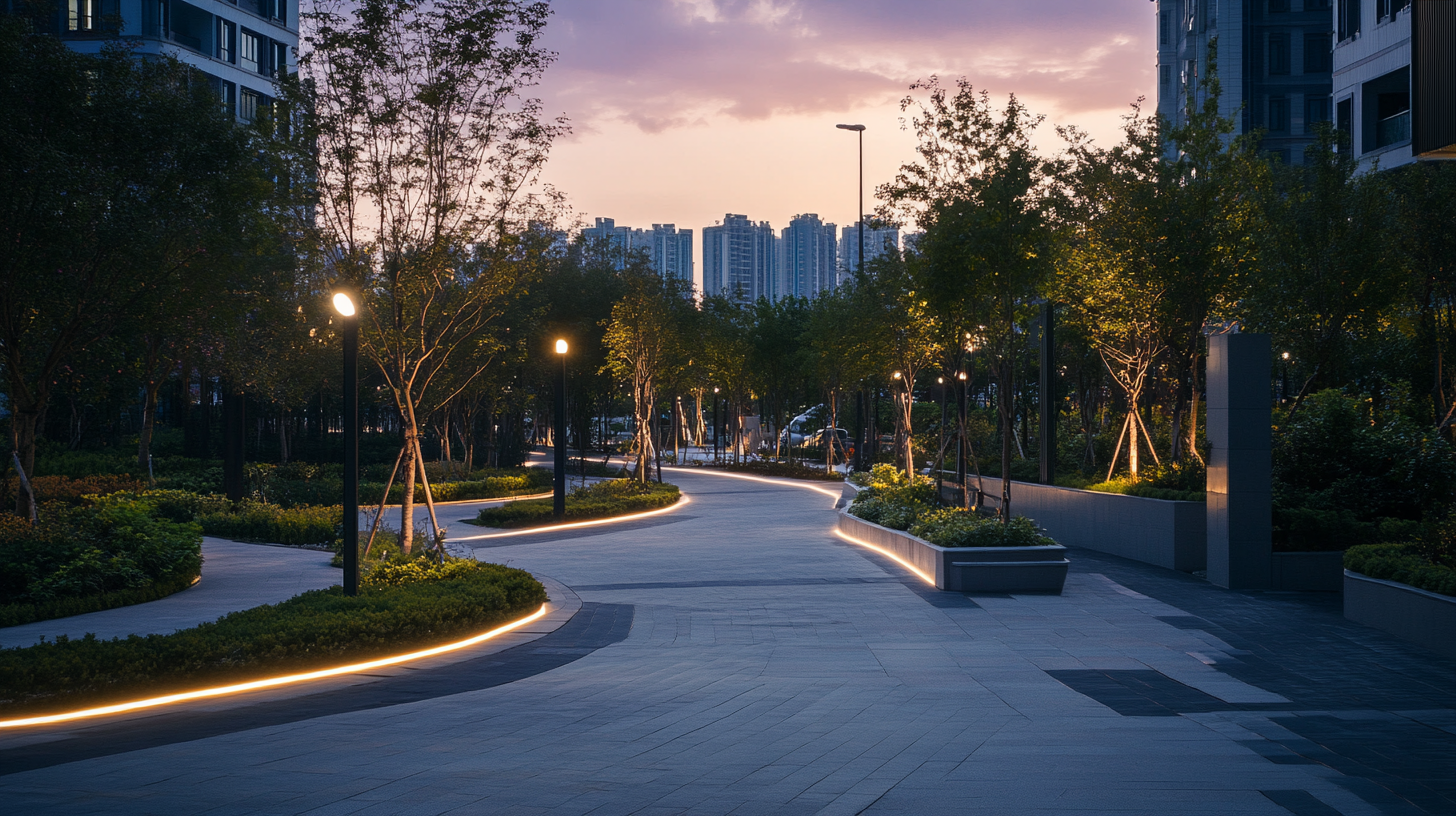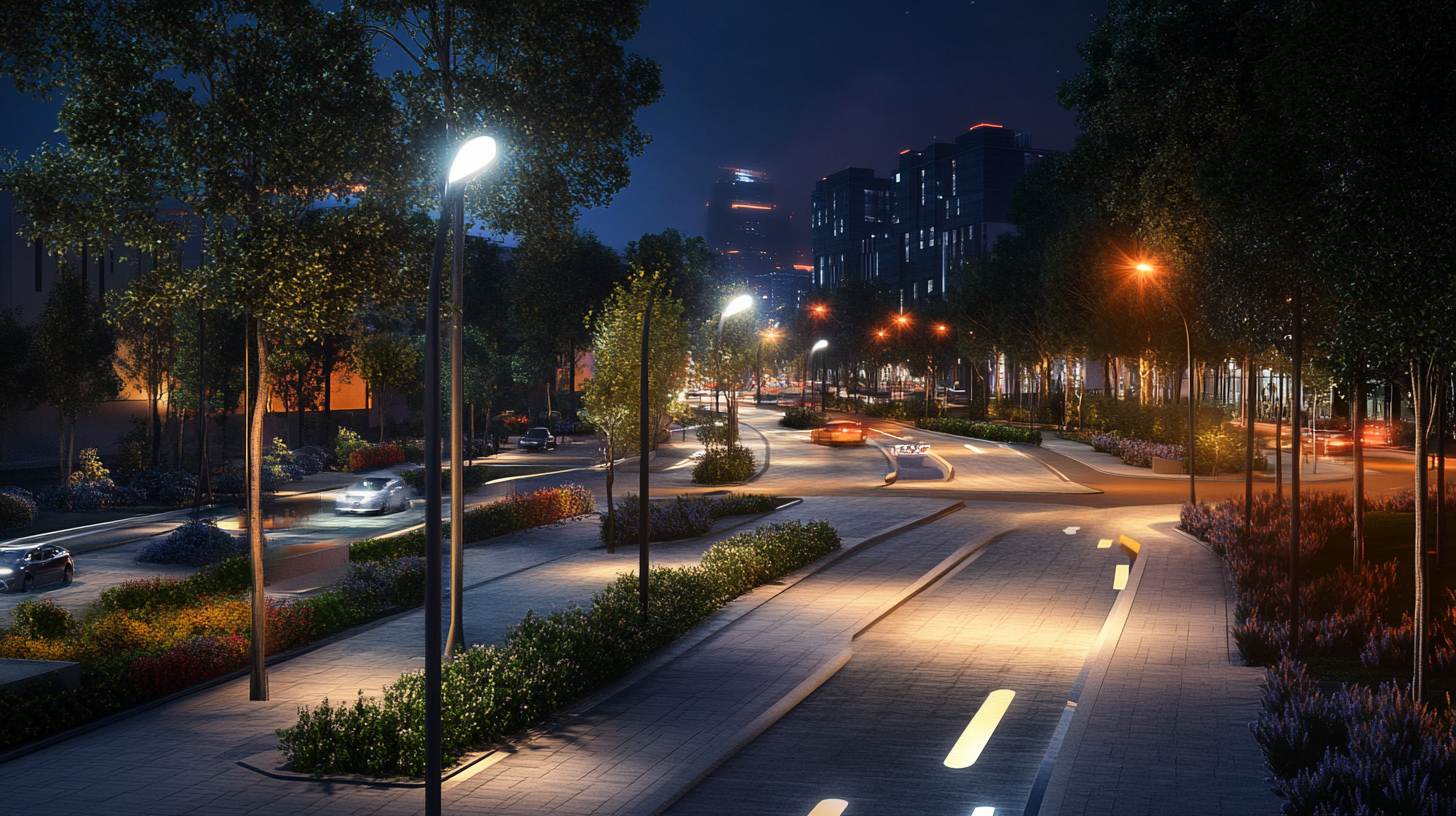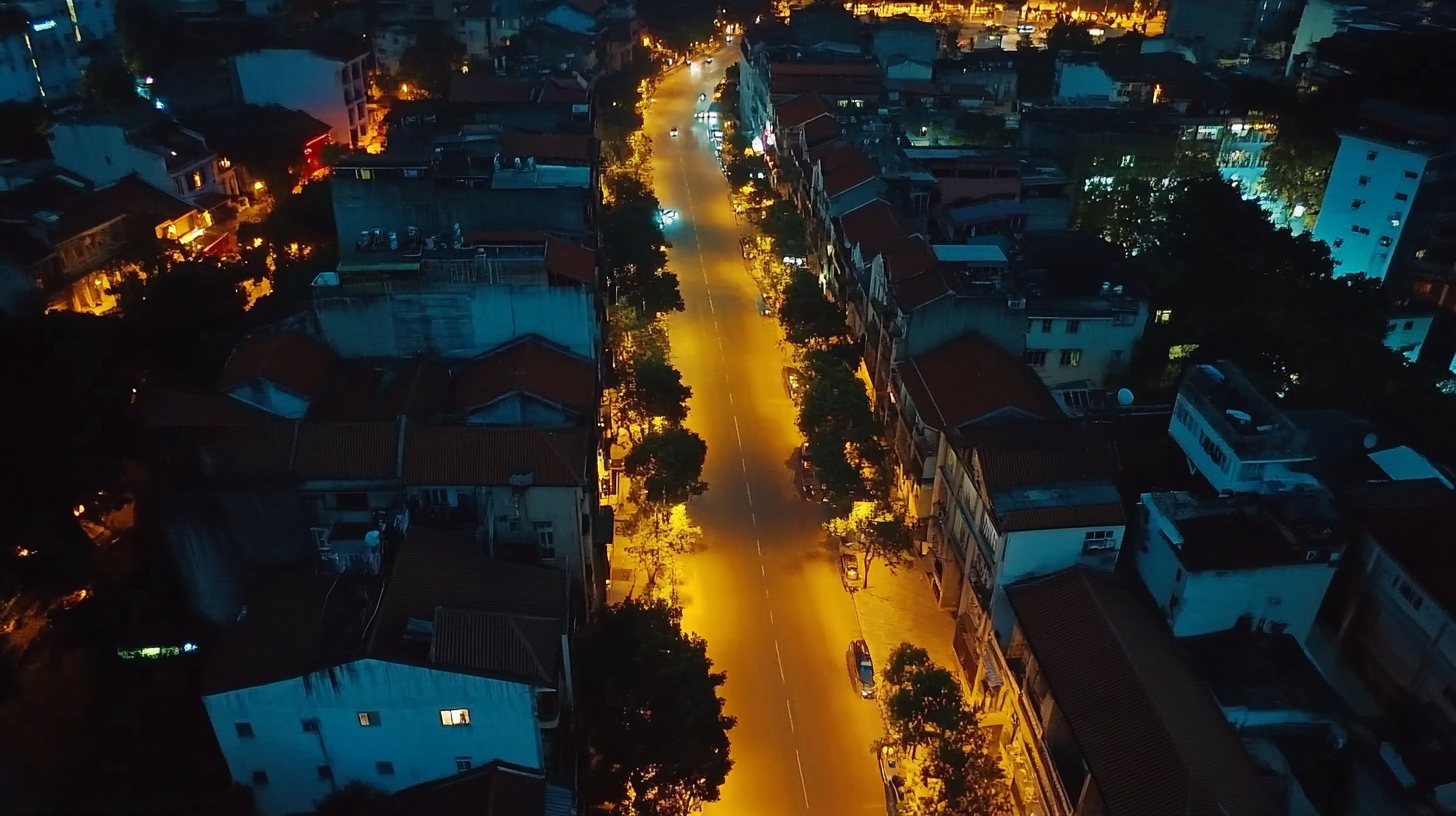What Are the Benefits of Using LED Light Street Solutions for Urban Development
Urban development is an ever-evolving field that seeks innovative solutions to improve the quality of life in modern cities. One such advancement that has garnered significant attention is the implementation of LED light street solutions. As cities continue to grapple with the challenges of energy consumption, safety, and sustainability, LED technology emerges as a game-changer, offering not only energy efficiency but also enhanced illumination for public spaces. This blog will explore the multifaceted benefits of integrating LED light street solutions into urban infrastructure.
The transition to LED light street solutions represents a profound shift in how urban areas manage their lighting systems. Beyond just providing brighter and more reliable lighting, these solutions contribute to reduced energy costs and lower carbon footprints. Additionally, the longevity and durability of LED technology mean less frequent replacements, ultimately minimizing waste and maintenance expenses. By investing in LED light street solutions, cities can enhance public safety, foster community engagement, and create more vibrant urban landscapes for their residents. Join us as we delve deeper into the advantages these lighting innovations bring to urban development.

The Role of LED Street Lighting in Enhancing Urban Safety and Security
The implementation of LED street lighting solutions plays a crucial role in enhancing urban safety and security. Well-lit public areas have been recognized as essential components of community safety, providing clearer visibility that can deter criminal activities. Cities that prioritize modern lighting systems often see a decrease in crime rates as brighter environments contribute to a sense of security among residents and visitors alike. For instance, cities like Salvador have been actively replacing outdated lighting with energy-efficient LEDs, improving not just safety but also economic efficiency. Moreover, the interconnected nature of smart LED streetlights contributes to the overall enhancement of urban safety. These systems can be equipped with sensors and surveillance capabilities, allowing for real-time monitoring and quicker response to incidents. The recent enthusiasm for connected lighting technologies emphasizes their role in creating safer streets. Authorities in various municipalities are increasingly acknowledging that effective outdoor lighting does more than illuminate; it fosters social engagement and might lead to a proactive approach in managing public spaces. However, it’s essential to note that while brighter streets can create a perception of safety, the relationship between lighting and crime reduction is complex. Some studies suggest that improved outdoor lighting may not result in fewer crimes, but its psychological benefits still play a significant part in urban safety. As cities evolve and adopt sustainable and efficient lighting solutions, it becomes evident that LED street lighting is more than just an aesthetic upgrade; it’s a strategic investment in the community’s safety framework.

Energy Efficiency: How LED Lights Reduce City Energy Costs
With urban areas expanding rapidly, cities are continually seeking effective ways to reduce operational costs while enhancing sustainability. One of the most significant advancements in urban lighting is the transition to LED light street solutions. According to the U.S. Department of Energy, swapping traditional street lighting for LEDs can save cities up to 50-70% on energy costs. This reduction not only decreases municipal expenses but also leads to a lower carbon footprint, making urban environments more eco-friendly.
The longevity of LED lights further compounds their cost-benefit value. While traditional incandescent bulbs typically last about 1,200 hours, LED street lights have a life expectancy of around 25,000 to 50,000 hours. The International Dark-Sky Association highlights that the longer lifespan means fewer replacements and reduced maintenance costs, allowing cities to allocate resources more efficiently. For instance, a city that invests in LED technology can redirect these savings towards community projects, infrastructure, and other essential services.
Moreover, LED street lighting enhances public safety with improved visibility. Studies show that well-lit streets are associated with lower crime rates and increased pedestrian safety, providing economic benefits through reduced law enforcement and emergency response costs. The combination of energy efficiency, cost savings, and enhanced safety positions LED light street solutions as a vital component in modern urban development strategies.

Environmental Benefits of LED Street Lighting in Urban Areas
The environmental benefits of LED street lighting in urban areas are becoming increasingly significant as cities strive for more sustainable development. With the growing awareness of light pollution and its impact on both human health and wildlife, the transition to LED technology offers a multifaceted solution. Recent studies emphasize that LEDs can dramatically reduce energy consumption, with some reports indicating savings of up to 75% compared to traditional lighting systems. This not only lessens the carbon footprint but also contributes to lower electricity bills for municipalities.
Moreover, LED street lighting is beneficial for urban ecosystems. Traditional streetlights can disrupt nocturnal wildlife and hunting patterns, leading to imbalances in local food webs. By utilizing warmer LED alternatives, cities can mitigate these effects, reducing light pollution that disturbs natural behaviors. A recent consultation in Dorset highlights the focus on community input for improved street lighting, showcasing an increasing recognition of how urban lighting choices can impact both the environment and quality of life.
In the context of urban growth, reports suggest that smart street lighting systems, which often incorporate LEDs, are essential for creating sustainable and connected urban environments. This technology not only supports energy efficiency but also enhances safety and accessibility, ultimately promoting healthier urban living conditions. As cities plan for a sustainable future towards 2050, the integration of LED lighting solutions will likely play a pivotal role in shaping well-lit, environmentally friendly urban landscapes.

Improving Aesthetic Appeal: The Design Advantages of LED Street Solutions
The integration of LED street lighting in urban development presents a significant opportunity to enhance the aesthetic appeal of cities. Unlike traditional street lighting, LED fixtures offer a variety of designs and color temperatures, allowing urban planners to create visually cohesive environments that complement architectural styles and landscapes. For instance, a report by the U.S. Department of Energy found that over 30% of cities using LED solutions reported a noticeable improvement in the overall look and feel of urban spaces, which contributes to a heightened quality of life for residents.
Moreover, the versatility of LED street solutions facilitates innovative design approaches. These lights can be integrated into artistic installations, illuminate public parks, and highlight shopping districts, creating inviting atmospheres that encourage community interaction. A study by the International Council on Monuments and Sites revealed that well-lit public spaces tend to attract more foot traffic, which not only bolsters local businesses but also fosters a sense of safety and belonging among community members. The use of LEDs, with their sleek profiles and enhanced color rendering, allows municipalities to craft dynamic urban environments that are both functional and aesthetically pleasing.
The long lifespan and lower energy consumption of LED lighting add to their design advantages. According to the Lighting Research Center, LED solutions can last up to 25 times longer than traditional bulbs, reducing the need for frequent replacements and maintenance. This longevity allows cities to invest in higher-quality fixtures that enhance their visual appeal without the constant hassle of upkeep. By prioritizing aesthetically pleasing design in street lighting, urban developers can create captivating cityscapes that not only illuminate but also inspire.
Smart City Integration: LED Lighting and the Future of Urban Mobility
As urban areas continue to grow, the integration of smart technologies becomes essential for sustainable development. One of the most significant advancements in this realm is the implementation of LED lighting solutions in street infrastructure. These innovative systems not only enhance energy efficiency but also create a platform for integrating advanced mobility solutions. By incorporating smart LED street lights, cities can optimize traffic flow, reduce accidents, and foster a safer environment for pedestrians and vehicles alike.
The marriage of LED lighting and smart city initiatives promotes seamless communication between streetlights and other urban structures. For example, these smart systems can be equipped with sensors that detect pedestrian movement and adjust the lighting accordingly, enhancing safety during late-night hours. Additionally, by connecting LED streetlights to traffic management systems, cities can monitor real-time data and implement responsive strategies to manage congestion. This capability not only saves energy but also makes urban mobility more effective and responsive to the needs of the community.
Moreover, LED lighting supports the broader goals of sustainable urban development by facilitating clean energy use and reducing carbon footprints. These environmentally friendly solutions can contribute to urban mobility by integrating with electric vehicle charging stations, thus encouraging the adoption of electric transport. With the growing emphasis on green technology, cities that invest in LED street lighting are at the forefront of developing smart, mobile-friendly environments that cater to the demands of modern urban life.


